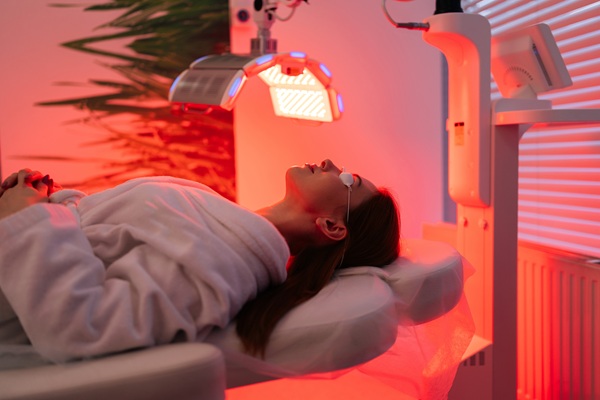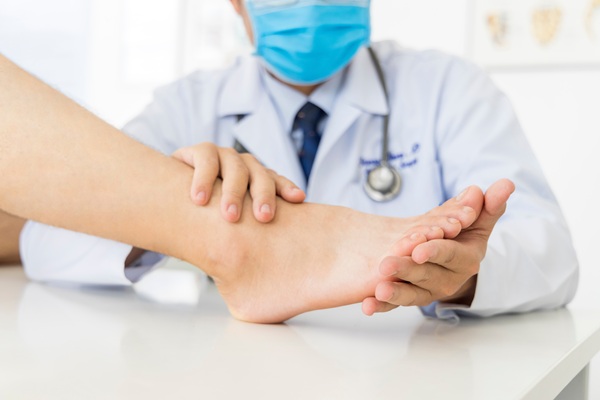Orthopedics Botox TreatmentAustell, GA
Orthopedics botox treatment is a modern medical approach that helps manage pain and improve muscle function for individuals with orthopedic conditions. This treatment should not be confused with cosmetic botox. Unlike cosmetic botox, which is primarily used to reduce wrinkles and improve appearance, orthopedic botox targets muscle and nerve issues contributing to pain and limited mobility.
Delta Orthopedics offers orthopedics botox treatment at our Austell office. By relaxing overactive muscles through the blocking of nerve signals, this treatment reduces stiffness, alleviates discomfort, and helps patients regain their ability to move more freely. Contact 678-439-5216 to schedule an appointment.
How Orthopedics Botox Treatment Differs From Cosmetic Botox
While both orthopedic and cosmetic Botox use the same active ingredient called Botulinum Toxin, their purposes and applications differ. Cosmetic Botox focuses on reducing wrinkles and improving facial aesthetics, whereas orthopedic botox addresses muscle and nerve-related issues to improve function and alleviate pain.
Orthopedic botox treatment works by relaxing overactive muscles contributing to discomfort and movement restrictions. By blocking nerve signals, it reduces muscle spasms and tension, allowing the affected areas to heal and regain functionality. This treatment also helps to minimize chronic pain, improve joint mobility, and enhance overall quality of life.
Patients often seek orthopedic botox treatment because it provides targeted relief and a non-invasive solution. Unlike surgery, which involves downtime and potential risks, botox injections are minimally invasive and require little recovery time. Additionally, this treatment can target specific problem areas, ensuring each patient receives personalized care that meets their unique needs.
“Orthopedic botox works by relaxing overactive muscles contributing to discomfort and movement restrictions.”
Conditions Treated with Orthopedics Botox
Orthopedic doctors recommend orthopedics botox treatment for a range of conditions related to muscle and nerve dysfunction. Chronic muscle pain caused by tension or overuse is one of the most common reasons patients pursue this treatment. Muscle spasms, which result in involuntary contractions and pain, are another frequent concern that botox injections address effectively.
Joint pain is also commonly treated with orthopedic botox. Due to its ability to block nerve signals that control the muscles surrounding a joint, the treatment reduces stress on the area and improves overall function. For patients recovering from injuries, botox can help manage pain and facilitate rehabilitation, making the recovery process smoother and more efficient.
Patients with neuromuscular conditions, such as dystonia or spasticity, also benefit from orthopedic botox treatment. These conditions often result in abnormal muscle movements or tightness, which can be relieved through targeted injections. The treatment supports the restoration of normal function, enabling patients to perform daily activities with greater ease.
“Orthopedic doctors recommend orthopedics botox treatment for a range of conditions related to muscle and nerve dysfunction.”
Orthopedics Botox Treatment Process
The process of receiving orthopedic Botox treatment begins with a thorough consultation. During this initial visit, the orthopedic specialist evaluates the patient’s medical history and symptoms to determine whether Botox injections are appropriate. The orthopedic doctor may also use diagnostic tests, such as imaging or physical assessments, to identify the affected muscles and plan the treatment.
During the procedure, the doctor uses fine needles to inject small amounts of botulinum toxin into the targeted muscles. The procedure is relatively quick and typically causes minimal discomfort. Most patients report only mild soreness or swelling at the injection site, which subsides shortly after treatment.
The effects of botox injections generally last three to six months, depending on the condition being treated and the patient’s response. Follow-up appointments are necessary to monitor progress and determine whether additional sessions are needed to maintain results.
“During the procedure, the doctor uses fine needles to inject small amounts of botulinum toxin into the targeted muscles.”
Benefits of Orthopedic Botox Treatment
Orthopedic botox offers several advantages over traditional pain management methods. One of its most notable benefits is its ability to provide fast and long-lasting relief. Unlike oral medications, which often take time to take effect and may require frequent doses, botox injections work directly at the source of the pain and provide sustained results for several months.
Another advantage is the minimal downtime associated with the procedure. Patients can usually resume light activities immediately after treatment, making it a convenient option for individuals with busy schedules. Additionally, the treatment’s non-invasive nature eliminates the risks associated with surgical interventions, such as infections or extended recovery periods.
By addressing the root causes of pain and dysfunction, orthopedic botox supports long-term recovery and improved quality of life. Patients often experience reduced pain, better mobility, and enhanced muscle function, allowing them to return to their favorite activities and maintain an active lifestyle.
“By addressing the root causes of pain and dysfunction, orthopedic botox supports long-term recovery and improved quality of life.”
Follow-Up Care
Follow-up care is an important part of maximizing the benefits of orthopedic botox treatment. Patients are typically encouraged to engage in gentle exercises or physical therapy to strengthen muscles and improve flexibility. Maintaining a healthy lifestyle, including proper nutrition and hydration, further supports the body’s healing process.
It is essential for patients to adhere to our Physician Assistant-certified (PA-C) recommendations, including attending scheduled follow-up appointments and monitoring symptoms. Patients should promptly report any pain level changes or muscle function issues to our office.
By combining professional treatment with diligent at-home care, patients can enjoy long-term relief and improved functionality. Orthopedic botox addresses current symptoms and helps prevent future issues, promoting overall wellness and mobility.
"By combining professional treatment with diligent at-home care, patients can enjoy long-term relief and improved functionality."
Questions Answered on This Page
Q. What is orthopedic botox treatment?
Q. What conditions can orthopedic botox treatment treat?
Q. What happens during the orthopedics botox treatment appointment?
Call Us Today
By targeting the underlying causes of discomfort, this treatment provides lasting results and supports a more active and fulfilling lifestyle. If you are experiencing chronic pain, muscle spasms, or restricted movement, consider exploring the benefits of orthopedic botox. Contact Delta Orthopedics at 678-439-5216 to schedule your consultation and take the first step toward relief and improved quality of life.
Frequently Asked Questions
Q. What is orthopedics botox treatment?
A. Orthopedics botox treatment is a medical procedure that uses botulinum toxin injections to help relax muscles, reduce pain, and improve mobility. This treatment targets specific areas of the musculoskeletal system where excessive muscle tension or nerve activity is causing discomfort or limited movement. By addressing these underlying issues, orthopedic botox helps patients experience relief and improved function in affected areas.
Q. How does this treatment differ from cosmetic botox?
A. While cosmetic botox is used to smooth wrinkles and enhance appearance, orthopedics botox treatment focuses on addressing functional problems such as muscle spasms and chronic pain. The goal of orthopedic botox is to improve the health and functionality of muscles and nerves, making it a therapeutic option rather than a cosmetic one. This distinction makes it a valuable tool for managing conditions that impact mobility and quality of life.
Q. Is the treatment painful?
A. Most patients find orthopedics botox treatment to be well-tolerated, with only mild discomfort during the procedure. The injections are administered using very fine needles, and any soreness at the injection site typically resolves quickly. For those concerned about discomfort, practitioners can take steps to ensure the experience is as comfortable as possible.
Q. How long do the effects last?
A. The effects of orthopedics botox treatment usually last between three and six months. After this period, the muscles may gradually return to their previous state, and additional treatments may be recommended to maintain results. Regular follow-up appointments with the practitioner help determine the appropriate schedule for ongoing care.
Q. Who is a candidate for orthopedics botox treatment?
A. Patients living with chronic pain, muscle stiffness, or neuromuscular conditions such as dystonia or spasticity may benefit from orthopedics botox treatment. It is particularly effective for individuals who have not found relief through traditional methods like medication or physical therapy. A consultation with a qualified orthopedic specialist is the best way to determine if this treatment is appropriate for a specific condition.
Definitions
- Orthopedics Botox Treatment
- A medical procedure using botulinum toxin injections to relieve pain and improve muscle function.
- Orthopedic Doctor
- A specialist focused on diagnosing and treating musculoskeletal conditions.
- Botulinum Toxin
- A purified protein that blocks nerve signals to relax muscles.
- Muscle Spasms
- Involuntary contractions causing pain and restricted movement.
- Chronic Pain
- Long-lasting discomfort that persists beyond the usual recovery period.
- Neuromuscular Conditions
- Disorders affecting the nerves and muscles, leading to pain or dysfunction.
- Injection Sites
- Specific muscles targeted for botulinum toxin treatment.
- Physical Therapy
- A rehabilitation method focusing on improving mobility and strength.
- Treatment Frequency
- The number of sessions required to achieve and maintain desired results.
- Post-Treatment Instructions
- Guidelines are provided to patients to enhance recovery and maximize treatment benefits.
Contact Us
Delta Orthopedics is located at
1790 Mulkey Rd Build 9 Suite 1314
Austell, GA 30106





